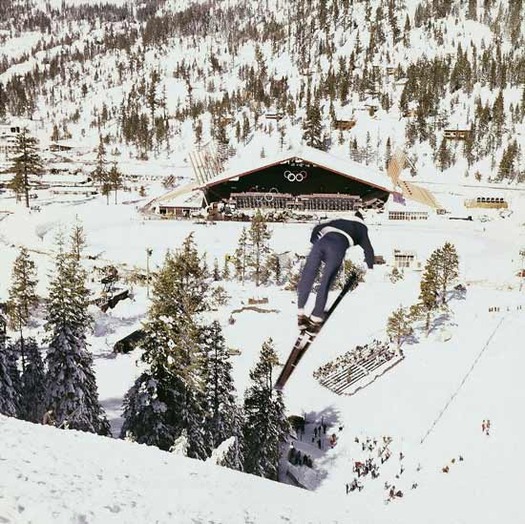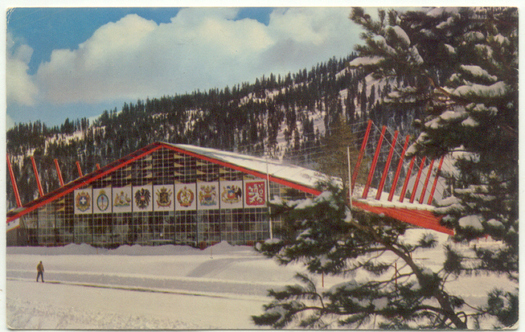
When the Olympics closed last night, attention focused for the last time (for most of us) on Sochi, the sleepy Russian summer resort that was transformed, practically from whole cloth and at staggering cost, into the home for the winter games. As you've heard endlessly repeated, these have been Vladimir Putin's games, a demonstration of his authority, and a political statement about Russia's perception of its place on the world stage.
That the Olympics might be used as a propaganda tool is hardly a revelation. Hitler's 1936 games stand as the most egregious manifestation of this appropriation of sport for politics, but every games is a demonstration of the ideals and goals of its host. And Sochi is hardly the first resort town to have been created from thin air, in thin air.
As Margaret Supplee Smith writes in her epic history of the American ski resort, when Squaw Valley won rights to host the 1960 games — beating out the likes of Innsbruck and St. Moritz — it was "a virtual wilderness," with one chairlift and a lodge with fifty — fifty! — rooms.
Transformation of the town into a venue that could host five thousand participants required a coordinated effort among the Army, Air Force, and Navy. Walt Disney himself helped orchestrate public ceremonies. Architect and industrial designer Eliot Noyes oversaw the Data Processing Center, which was operated by IBM. CBS covered the events on television. Here was American modernism at work; a demonstration of the optimistic, technocratic, can-do, national spirit at the height of the Cold War. It was the same spirit that won World War II (nevermind the Soviet front), and was then remaking the world into a postwar consumer paradise.

The architectural centerpiece was Blyth Arena, a spectacular mountain-shaped building with glass walls looking out on the slopes and a roof slung from steel cables. The design, by William Corlett, might be described as Slopestyle Modern. It was there, before a standing-room-only crowd of some 10,000, that the underdog United States mounted a third-period comeback to beat the mighty Soviets 3-2 in their penultimate game, and then dispatched the Czechs 9-4 to capture the gold medal.
As at Sochi, the games were not without considerable controversy regarding their impact on a pristine environment. But the fight that swirled around development back then now seems tame in comparison, and is notable for how succesful the forces of conservation were in opposition. No such luck in Russia.
This history is covered in detail in Smith's book, which — full disclosure — I commissioned as an editor many, many years ago for Princeton Architectural Press. Over the intervening period, Smith found a new publisher and new editors to bring it to life. It's a pleasure to finally see it between hard covers.
—@marklamster

